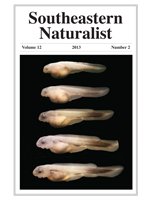In recent years, silivicultural methods have shifted away from clearcut harvesting towards greater retention of overstory trees through part or all of a rotation. However, little is known about the effects of partial harvesting on wildlife populations. Thus, we examined effects of high-leave shelterwood management on terrestrial salamanders prior to and after an initial harvest and a subsequent overstory removal harvest (ORH) 13 years later. On an experimental research site in southwestern Virginia, we compared changes in salamander captures in this plot to a clearcut and control plot 1994–1996 and 2007–2009. Compared to contemporaneous estimates from an unharvested control, salamander captures were lower on shelterwood and clearcut plots 2-years after the initial harvest (1996) and lower on the shelterwood plot 1- and 2-years after the ORH (2008, 2009). Captures of the most common species, Plethodon cinereus (Eastern Red-backed Salamanders), followed similar trends with fewer captures in both harvested plots 2-years after the initial harvest (1996), but only the ORH differed from the control 2-years after the second partial harvest (2009). Abundance of woody debris was greater in the shelterwood following the ORH but was more decayed in the control plot. The regenerating clearcut (14 years post-harvest) had deeper leaf litter and denser understory vegetation than the ORH. These data are some of the first available describing effects of multiple harvest entries on terrestrial salamanders and suggest cumulative negative impacts on salamanders may occur from partial harvesting systems. More long-term monitoring of salamander populations is justified in silvicultural systems with multiple entries within a rotation.
How to translate text using browser tools
1 June 2013
Effects of Repeated-Stand Entries on Terrestrial Salamanders and their Habitat
Jessica A. Homyack,
Carola A. Haas
ACCESS THE FULL ARTICLE

Southeastern Naturalist
Vol. 12 • No. 2
June 2013
Vol. 12 • No. 2
June 2013




